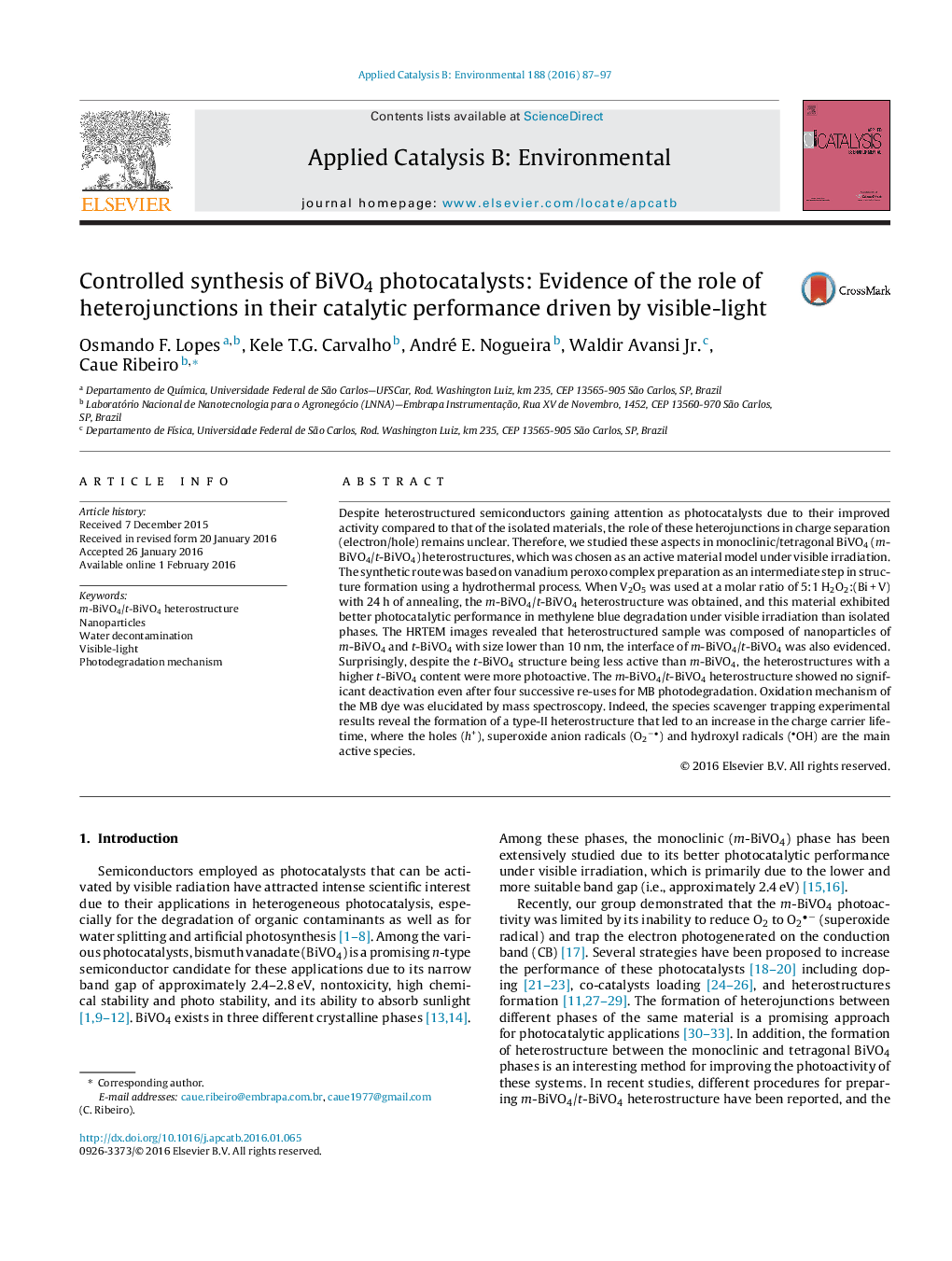| کد مقاله | کد نشریه | سال انتشار | مقاله انگلیسی | نسخه تمام متن |
|---|---|---|---|---|
| 45001 | 46393 | 2016 | 11 صفحه PDF | دانلود رایگان |

• m-BiVO4/t-BiVO4 heterostructures were fabricated by one-step method.
• A type-II heterostructure was formed between m-BiVO4 and t-BiVO4 phases.
• Heterostructure was more effective than isolated phases in MB oxidation under visible-light.
• Heterojunctions led to an increase in the charge carrier lifetime.
Despite heterostructured semiconductors gaining attention as photocatalysts due to their improved activity compared to that of the isolated materials, the role of these heterojunctions in charge separation (electron/hole) remains unclear. Therefore, we studied these aspects in monoclinic/tetragonal BiVO4 (m-BiVO4/t-BiVO4) heterostructures, which was chosen as an active material model under visible irradiation. The synthetic route was based on vanadium peroxo complex preparation as an intermediate step in structure formation using a hydrothermal process. When V2O5 was used at a molar ratio of 5:1 H2O2:(Bi + V) with 24 h of annealing, the m-BiVO4/t-BiVO4 heterostructure was obtained, and this material exhibited better photocatalytic performance in methylene blue degradation under visible irradiation than isolated phases. The HRTEM images revealed that heterostructured sample was composed of nanoparticles of m-BiVO4 and t-BiVO4 with size lower than 10 nm, the interface of m-BiVO4/t-BiVO4 was also evidenced. Surprisingly, despite the t-BiVO4 structure being less active than m-BiVO4, the heterostructures with a higher t-BiVO4 content were more photoactive. The m-BiVO4/t-BiVO4 heterostructure showed no significant deactivation even after four successive re-uses for MB photodegradation. Oxidation mechanism of the MB dye was elucidated by mass spectroscopy. Indeed, the species scavenger trapping experimental results reveal the formation of a type-II heterostructure that led to an increase in the charge carrier lifetime, where the holes (h+), superoxide anion radicals (O2−) and hydroxyl radicals (OH) are the main active species.
We obtain m-BiVO4/t-BiVO4 heterostructures as a model system and study the role of heterojunctions in improving the photocatalytic performance.Figure optionsDownload as PowerPoint slide
Journal: Applied Catalysis B: Environmental - Volume 188, 5 July 2016, Pages 87–97